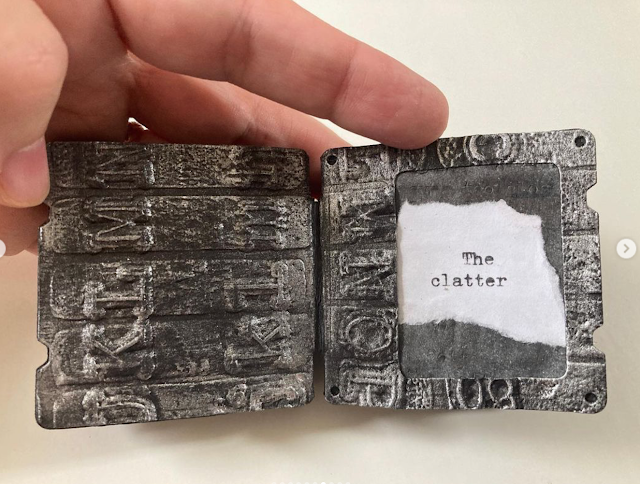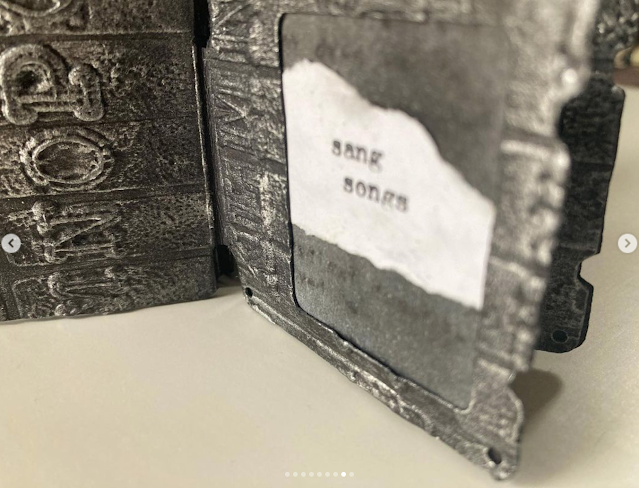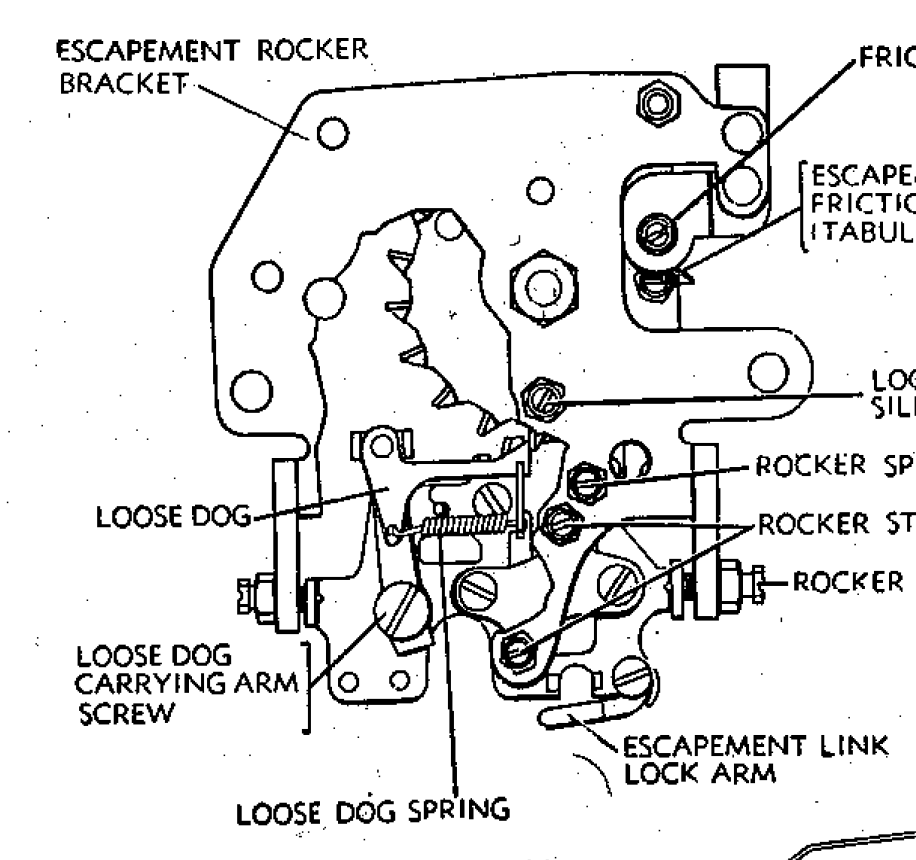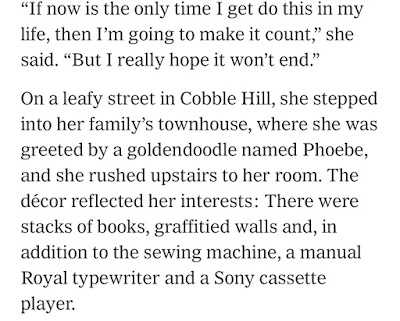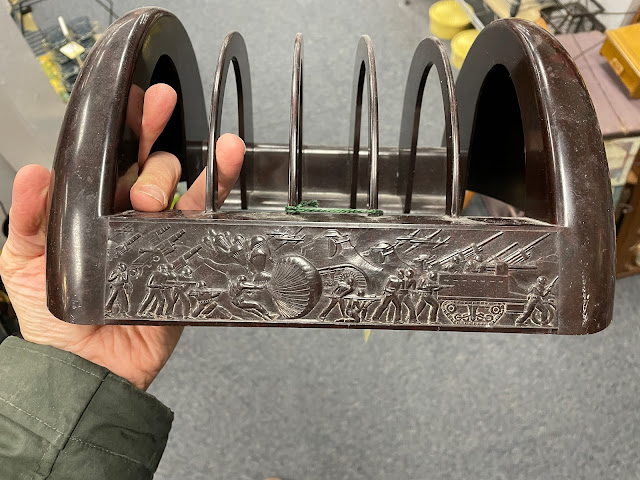British artist Kirsty Hall has created some wonderful, tiny books with typewritten text, including Gleaning, which is about typewriting itself. I'm reproducing it here from her Instagram account, with her permission.
Hall describes her process:
I cut the slides from black paper and then embossed them with the Typewriter 3-D embossing folder. I then added Distress Foundry Wax in Sterling to bring out the texture of the embossed typewriter keys.My original plan for the centre of the slides was to use the reverse side of the typewritten text so it couldn’t be read. However, it just looked a bit blah. So instead I used the typed text the right way round but I blacked it out with Distress ink in Black Soot, so it still can’t really be read. The typewritten backgrounds are the lyrics to two songs by Michelle Shocked, one is Prodigal Daughter (Cotton-Eyed Joe) and the other is Anchorage. They are songs that strongly remind me of a particular time in my life. I typed both out by hand and then cut them to size using another die from the same set.The book is bound with a slot and tab binding with the tabs hidden inside the slides. I made the tabs with the leftover cut-out centres from the slides. This book really wants to splay open, so I made a black plait to hold it closed. Some of the bindings are just like that; it would be annoying in a book I was constantly working in but it’s fine for a one-off, sculptural artist’s book like this. I may experiment with a longer folded tab in the future to see whether that gives better results.
These books start in different ways. They may be built around a colour, a texture, a vibe, a technique I want to try, an idea I’m chasing down or a phrase that pops into my head. Gleaning started with me wanting to use my Tim Holtz typewriter embossing folder but became deeply personal when I recalled my first typewriter.I was a young single mother in the early 1990’s, ragged with exhaustion and post natal depression, when I bought an electric typewriter on tick. [That's "on credit" for Americans.]
I couldn’t get into deep art states when my son was tiny. I quickly found that I no longer had the time, energy or concentration for my previous artwork. I did try but I would get furiously resentful if the baby woke up when I was lost in a drawing. Obviously I had to prioritise him, so I reluctantly put my art things away. But I was still desperate for a creative outlet, so I switched to two things that I found I could more easily pick up and put down - photography and writing.
When my son was finally in bed of an evening, I would sit at the kitchen table with my typewriter and hammer out all my thoughts about the new emotions and experiences I was dealing with. It was such a raw, unsettled time. We had just gotten out of an unsafe living situation and were staying with friends in their small spare room; he was in his cot and I was on a mattress on the floor. We would never have ended up on the streets, in a pinch I could have gone home to my parents, but we did fit the definition of ‘hidden homelessness’. Everything felt so tenuous and temporary and like I had been fractured into a thousand pieces.
Thankfully I now have a safe home, a happy marriage, an established daily art practice and that wee bairn turns 30 this month! I also have two old manual typewriters that I use solely for art, which feels gloriously decadent. This book was made using one of them. But I’ve never forgotten that first typewriter; it’s no exaggeration to say that it was a real lifeline for me during that tumultuous time.
Gleaning vividly embodies the way a few words can have deep meaning when they are formed with care and stamped into matter. The book looks like such a satisfying tactile experience, even when it is presented to us indirectly, through pixels. It is a reminder of what writing and feeling can be.
Thank you, Kirsty Hall!








